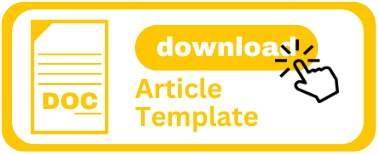Perbedaan Frekuensi Pemberian Enteral Feeding terhadap Toleransi Feeding dan Kadar Glukosa Darah
DOI:
https://doi.org/10.33088/jkr.v3i1.617Keywords:
Keywords : type 2 diabetes mellitus, bolus enteral feeding, blood glucose, feeding tolerancAbstract
Medical nutrition therapy is one of the interventions to provide sufficiently nutrition and to optimize glycemic controls in meeting the body metabolic needs. An Enteral Feeding is an alternative feeding method when there are obstacles to fulfill patients nutrition orally. This study aims to determine feeding tolerances and blood glucose controls in Type2 Diabetes Mellitus patients with different Enteral Feeding frequencies-three and six times preserving. This research is a quasi-experimental design study involving 26 patients admitted in a hospital. The results of the study on respondents with enteral feeding of a frequency 3x/24 hours found that 2respondents (15.4%) were tolerant with enteral feeding given and as many as 3respondents (23.1%) had normal blood glucose, while the results of the study for respondents with enteral feeding of a frequency 6x / 24 hours, 12 respondents (92.3%) were tolerant with enteral feeding given and as many as 12 respondents (92.3%) had normal blood glucose.
The results showed that there was a statistically difference between the three times and six times Enteral Feeding with feeding tolerance (p = 0.005). There was a difference between the frequency of enteral feeding six times and three times in the blood glucose level (p = 0.005). Results of this study will assist in controlling blood glucose by regulating the timing of feeding in patients with type 2 diabetes mellitus.
Downloads
Published
Issue
Section
License
Authors who publish with JURNAL KEPERAWATAN RAFLESIA agree to the following terms:
- Authors retain copyright and grant the Jurnal Keperawatan Raflesia right of first publication with the work simultaneously licensed under a Creative Commons Attribution License (CC BY-NC-SA 4.0) that allows others to share (copy and redistribute the material in any medium or format) and adapt (remix, transform, and build upon the material) the work for any purpose, even commercially with an acknowledgement of the work's authorship and initial publication in Jurnal Keperawatan Raflesia.
- Authors are able to enter into separate, additional contractual arrangements for the non-exclusive distribution of the journal's published version of the work (e.g., post it to an institutional repository or publish it in a book), with an acknowledgement of its initial publication in Jurnal Keperawatan Raflesia.
- Authors are permitted and encouraged to post their work online (e.g., in institutional repositories or on their website) prior to and during the submission process, as it can lead to productive exchanges, as well as earlier and greater citation of published work (See The Effect of Open Access).

















